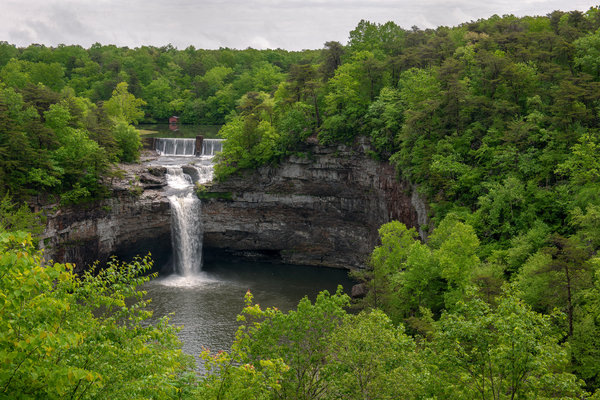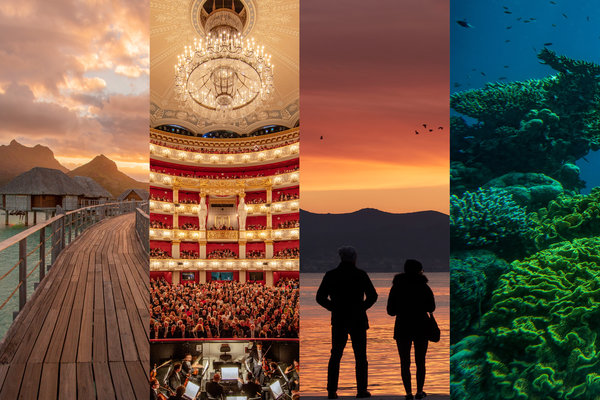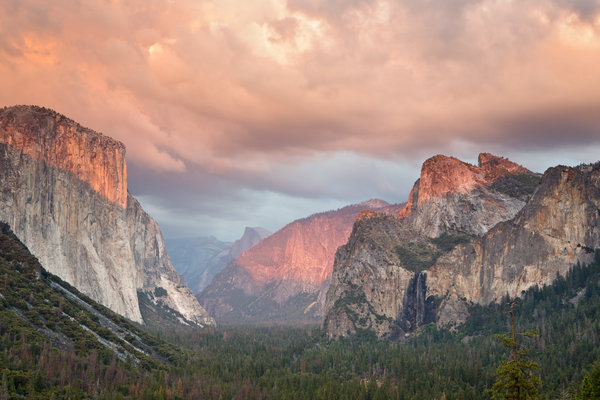On a cold and damp Iowa evening last October, I sat in a tent and thought about Abraham Lincoln. More precisely, I thought about Lincoln signing a minor piece of legislation deeding the Yosemite Valley to the state of California. It happened in 1864, while the Civil War raged.
It is important because of just a few words. California was given ownership of Yosemite on the condition that the land “be held for public use, resort, and recreation.” This was the official approval of a remarkable and radical idea: Everyone should have access to nature. It led to our ecosystem of national and state parks, wilderness areas and nature preserves — all generally committed to providing this access.
And it came at a time when President Lincoln presumably had a lot on his mind. Did he realize his signature would transform America’s relationship with nature?
That October night, I was camping in Iowa’s Waubonsie State Park, just one park among the many thousands now scattered across the United States. It was near the tail end of a yearlong mission to visit as many state parks as possible. (Final tally: 53.) This article, the second on state parks, focuses on those I visited in the western part of the country.

Waubonsie is a small state park in the southwestern corner of Iowa, near Nebraska, Kansas and Missouri. I didn’t know anything about it, except for reviews saying it was a good place for a picnic. I figured it’d be a few lonely trees surrounded by corn. What I found truly astounded me, and emphasized what I love most about state parks: You never know what you are going to find.
In this 1,990-acre state park, I found an ancient forest on a plateau, an island of mysterious trees in the middle of a vast agricultural region. A secret in plain sight. Waubonsie, as it turns out, is the result of glaciers melting and rushing down the nearby Missouri River. Silt from these glaciers has piled up in mounds large enough to become their own landforms, here called the Loess Hills. There are only two places in the world where this topography exists: the region where I was camping, and the Yellow River valley in China.
Driving into Waubonsie was like entering a hidden kingdom. Tall oak trees, their leaves gold and green in the fading sun, lined the main road. Trails circled along steep gorges thick with birds flitting in a temperate jungle environment. Mist curled along the tree line, and in the eerie stillness I felt the presence of something ancient. In a mad rush to investigate further, I bolted down a dinner of potato chips and cold coffee, pitched my tent, and spent the next two hours hiking through this fantasy of forested badlands. Every so often I came across hiking shelters built in the 1930s by the Civilian Conservation Corps that looked like giant mushrooms.

CreditChristopher Miller for The New York Times
Back in the tent, I found a shivering mosquito that hitched a ride from my previous night’s stop in Bentsen Rio Grande State Park in South Texas. Rain pattered against the thin blue fabric of the tent, steady and soothing like a heartbeat. I sat there, truly content, grateful for places like Waubonsie, where I could bound through secret forests and pay only $6 for the privilege of a night’s rest within its boundaries.
When I left the next morning, I drove down a state road and within minutes, I was back in the fields. I had to stop the car and look back at the forested gorges above me, just to make sure it wasn’t all a weird dream.
The fan base grows
Not all state parks came out of nowhere like Waubonsie, but they are all rich with surprises, secrets and authenticity. Generally, they were off the beaten track, which made them all the more interesting. This was certainly the case in the first half of 2018, when I visited Eastern state parks.
Another part of their intrigue is that state parks come in all shapes and sizes. They don’t have that much in common, which makes a visit unpredictable. However, according to Linda Lanterman, president of the National Association of State Park Directors and director of Kansas State Parks, one common feature is their presence near our homes. “Not everyone is fortunate to go to a national park,” she said. “Not everyone can take a week off. That’s what makes the state park system so unique. It’s close to home and close to nature.” Ms. Lanterman said state parks generally are popular, and the number of visitors is rising. In 2002, total attendance at state parks was 758 million people. By 2017, that number had risen to 807 million.
In the second half of the year, as I headed west, I was curious about the state parks near our best-known national parks. If you’re fortunate enough to live next to a national park, do you still go to a state park? Two of my test cases, Bannack State Park in Montana and Harriman State Park in Idaho, are within 100 miles as the crow flies from Yellowstone National Park. As it turns out, both are well loved and popular, but in their own way.
Due west of Yellowstone, Bannack is one part idyllic campground alongside a river, two parts ghost town. It thrived in the 19th century as the site of a gold rush as well as Montana’s first territorial capital, but when the 20th century came around, it fell into a long, slow decline. Today, “Bannack is the best preserved of all Montana ghost towns,” according to the Montana State Parks website.
When my friend Chris and I arrived this past September, Bannack was a very busy ghost town. State park rangers conferred with arriving pickup trucks and pointed out places to set up. They were preparing for a four-day living history event, during which historical re-enactors would occupy the abandoned, one-street town and pretend it was 1862. Schoolchildren from the area were bused in and the town was filled with tourists watching re-enactors performing at the blacksmith camp, saloon, boardinghouse, butcher shop, school and church.
Bannack’s buildings are maintained in a state of “arrested decay,” meaning they are prevented from deteriorating further, but are not improved in any way. It provided an unusual, still-life view of the town. Grass covered a low-slung rectangular jail. Insulation was cardboard packing boxes, a testament to the area’s cold isolation. The entire short history of Bannack lay in front of us, from the raw log cabins on the outskirts of town to the cracked linoleum floors of the last occupied houses. Bannack’s last inhabitant left in the 1970s.
Just outside town lies the campground, where we spent the night. It occupies a small area alongside a creek, nothing more than a few curlicues of fire rings and grass protected by towering cottonwood trees. We gathered next to the fire as evening drew to a close, listening to the wind through the trees, the gurgle of the creek, and our campground neighbors reading books to each other.
The Bannack campground was like so many I had been to during my year of visiting state parks. There was the crackle of wood in the fire, distant voices in the background, the sounds of nature and a palpable absence of stress. Chris and I huddled next to the flames and talked about everything and anything, what will never be, what just was. The creek rushed past, the stars shone, and I felt whole.
A night in a yurt
The next day we drove to Harriman State Park in Idaho. Before it was given to the state, it was a working cattle ranch and retreat owned by the Harriman and Guggenheim families. The centerpiece is a series of ranch buildings alongside Henrys Fork, a tributary of the Snake River. When we visited, it echoed with the cheers and yells of a high school cross-country meet. During the winter, trails are groomed for skate and classic cross-country skiing, snowshoeing and fat bikes.
I hiked through a sprawling meadow that spanned both sides of the river. Birds darted through the tall grass and the sounds of the cross-country meet slowly fell away until all I heard was the wind and the water. I was excited to spot sandhill cranes, but later Chris’s telephoto lens revealed they were actually pelicans. Oh, well. We still had a comfortable night’s rest in one of Harriman’s yurts. According to parents at the cross-country meet, the yurts are a favorite spot for local residents to spend the weekend.
Over the year, many people happily described to me their relationships with local state parks, whether it was a winter weekend in a Harriman yurt or Chicago friends reminiscing about their first time camping in Midwest state parks. These places are often beloved by nearby communities. This was the case even in a city surrounded by internationally renowned wilderness: Alaska’s capital, Juneau.
With Glacier Bay National Park and the Tongass National Forest as neighbors, Juneau is a favored destination for cruise ships and adventure tourists alike. But it is also a city of 32,000 people, and nearby state parks cater to them. Among the most prominent is Point Bridget State Park, an expanse of 2,850 acres about 40 miles from Juneau, near the terminus of the city’s road system. According to the Alaska State Parks website, Point Bridget was founded in 1988, the result of a push by the citizens of Juneau “to have a state park for the state capitol.”
The park is a mix of temperate rain forest and meadow along a stretch of Lynn Canal coastline, the deepest fjord in North America. After parking near the entrance early one morning, Chris and I hiked through muskeg and then into a field of fireweed rising to an immense vista: miles of coastline, a fierce wind, and mountains ringing the horizon.


We passed by affable hikers who spoke of “brownie” sightings; a weirdly cute way of referring to grizzly bears. Soon we were at our destination, a basic cabin called Blue Mussel within a stone’s throw of the seashore. It was well loved, judging by the painted signs, rocks and seashells in the vicinity. Even in mid-September, well into autumn this far north, reservations had been difficult to get.
The cabin was small and simple: sleeping loft, a table and benches, big windows and a bunch of leftover spices. Down at the shoreline, I clambered over mussel-encrusted rocks, dodged the lapping of tidewater and followed the arc of bald eagles overhead. It was so peaceful and wonderful that even my inner thoughts quieted down. When I turned to face Blue Mussel, darkness was falling and the cabin’s bright lantern in the window shone ever brighter, like a benevolent gaze.
The next day we visited another Juneau-area state park, a string of islands in Lynn Canal called the Channel Islands State Marine Park. These 14 mostly uninhabited islands are about 25 miles northwest of Juneau and can be reached by floatplane or boat. They get a lot of Juneau area picnickers in the summertime, especially since they can be reached with small watercraft. We motored over to Aaron Island, a small thumbtack of wilderness surrounded by water. There was a nice sand beach, a campfire ring, thick forest and a rope dangling from a Sitka spruce. Immediately I became 8 years old and ran over. I challenge you to find anything more wonderful than an unexpected rope swing.
In Hawaii, a relaxed vibe
Even farther west, in Hawaii, I didn’t find any rope swings. Still, it’s no slouch when it comes to recreation. Hawaii state parks drew a mix of people, but judging from the many conversations about being off from work, visitors were mainly local. The beach at Kekaha Kai was perfect and the banyan tree at Wailuku River could have been the setting of a Guillermo del Toro movie, but Mahukona State Park was my favorite.
It was rough around the edges; posted signs warned against abandoning animals and there was a fair amount of broken concrete. But the relaxed, Friday evening vibe was amazing. People sat on old lawn chairs along the break wall and shared food from their grills. The backdrop was untamed vegetation, a rusted dock and railroad tracks. A faucet jutting out of a wall served as the communal shower.
Plus, the snorkeling was the best of my time in Hawaii. I swam into a small but deep bay, dove underwater and glided through hundreds of yellow triggerfish. They scattered like windblown leaves in the peak of fall color. In the distance I saw shadows of larger fish, but didn’t dare seek them out. Afterward, I spoke with the regulars who sat in their lawn chairs and gripped beer in foam cozies. They talked about watching whales just offshore in the winter.
In December, the winter of my state park year, I cheated and visited Yosemite National Park. I had been thinking about it for a long time, and my rationale was simple: it’s originally a state park. In fact, after Lincoln deeded Yosemite to California, it was America’s first state park, until California messed everything up and it was transferred back to federal control, becoming a national park in 1890.
Of course, Yosemite was amazing. I pitched my tent in Camp 4, the traditional hub of climbing in the park and one of only a few campgrounds listed on the National Register of Historic Places. I hiked for miles through the Mariposa Grove of giant sequoias. Like the hordes of tourists before me, I took pictures of the massive trees and wondered why I couldn’t ever capture their grandeur.
I was thrilled to visit Yosemite, but it’s not like it was a surprise. After all, it’s the default picture on my laptop. But I am grateful for its ability to move people to do great things. The tag team of Yosemite and Abraham Lincoln led to pockets of wilderness springing up everywhere across the United States; places where we jump into hidden coves, discover primeval forests in the middle of cornfields, and come upon a rope swing on a deserted island. I will never visit all 8,565 state parks, but that’s O.K. Each one I visit will be a gift.
Peter Kujawinski is a Chicago-based writer. He wrote the first article in this series, “Wherever You Are, There’s a State Park Nearby.” His latest book is the middle grade novel “Edgeland.”
Follow NY Times Travel on Twitter, Instagram and Facebook. Get weekly updates from our Travel Dispatch newsletter, with tips on traveling smarter, destination coverage and photos from all over the world.






